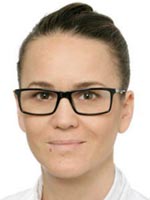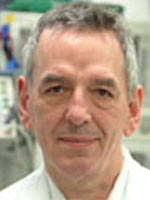Shoulder joint is the most mobile joint in human body. It consists of a head of humerus and a glenoid cavity. As all other joints, shoulder joint is surrounded by a glenoid cavity that produces glenoid fluid. It reduces friction in joint, nourishes articular cartilage and stabilizes the joint.
Around 3,000 artificial shoulder joints are installed in Germany every year. On the other hand, one uses about 150,000 artificial hip joints and 100,000 knee prostheses. The relatively small number of shoulder prostheses is contrasted by a very broad spectrum of diseases, which gives rise to the installation of a shoulder prosthesis. The growth rate of the installation of shoulder prostheses is currently enormous worldwide.
The modern shoulder prostheses used today have been installed since the 1970s. These are systems whose level of development is in the 3rd generation. In the "service life" (durability) today, shoulder prostheses fully correspond to the results of hip and knee prostheses with regard to their long-term durability.
It is important to install the prosthesis on time. If there is already a weakness when turning the arm outward, a muscle loss or rounding of the upper arm head in the X-ray image, pain relief can still be achieved. But because in such situations the muscles, tendons and joint capsule are already glued, the mobility after the installation of the shoulder prosthesis is no longer so good, i.e. it usually remains unchanged. The ideal time to install the shoulder prosthesis is when there is pain, non-surgical treatment measures cannot remedy the situation, the patient can still turn the arm out and the x-ray head is still round - with visible wear and tear in the main joint. Different rules apply than for example when installing artificial hip joints. On the one hand, an early installation is not announced, on the other hand, "waiting until it no longer works" no longer brings the desired result after the operation.
Especially when it comes to shoulder wear and rheumatism, there is always the question of whether or not to include an artificial shoulder cup. The answer is simple: there is no uniform guideline. If you install a full prosthesis (i.e. upper arm prosthesis and socket replacement), the early results, i.e. Pain relief and especially function, better in the first few years than with a half prosthesis (upper arm prosthesis without a cup). The disadvantage is that the long-term results currently show that the pan component is the weaker one. It causes problems years earlier and loosens more than the upper arm portion. Originally, all artificial pans were cemented in, and cement-free pans came onto the market in the 1990s. The future will show which type of anchoring is better. Ultimately, the decision as to whether a pan is to be installed is very individual. Decisive are factors such as: the representability of the pan during the operation, the underlying disease that has caused the abrasion, the type of abrasion on the pan (is the pan rubbed at all and if so, centrally or on its edges), etc.
Types of Shoulder Endoprosthetics
- With resurfacing endoprosthetics of the shoulder joint (resurfacing arthroplasty) only the joint surface (more often the head of the humerus) are changed. The main feature of the resurfacing endoprosthetics is that the damaged parts of the joint cartilage surface are removed without osteotomy. An artificial component of the endoprosthesis is installed on the peeled section of the shoulder bone.
- Unicompartmental endoprosthetics (hemiarthroplasty). In the case of unicompartmental prosthesis, one of the two shoulder joint parts is changed (either the head of the humerus or the glenoid cavity of the scapula).
- Total shoulder joint replacement, with a complete replacement of the adjoining surfaces (both the head of the humerus, and the glenoid cavity of the scapula). There are two types of total shoulder joint replacement: the replacement of only joint surfaces (Partial Resurfacing Arthroplasty - PRA) and the use of prostheses on a stem (Total Shoulder Arthroplasty - TSA).
- Revision shoulder joint arthroplasty is an operation performed to replace the existing endoprosthesis or its component.
There are two types of endoprostheses on a stem:
Anatomical Total Endoprosthesis
This endoprosthesis copies the natural shape, build, and biomechanics of the shoulder joint. The affected joint surfaces are replaced with similar artificial components. A sine qua non for anatomical endoprosthesis is the preservation of the elements of the rotational cuff, which stabilizes the joint pushing the prosthetic head into the glenoid cavity of the scapula, because the surface of the artificial shoulder joint is less than the size of the adjoining surface of the prosthetic head, which, on the one hand, increases the possible amount of motion in the joint and, on the other hand, increases the risk of dislocation of the endoprosthesis head.
Reverse Total Endoprosthesis
The philosophy of this endoprosthesis is in the opposite location of its components. It means that the blade component has a hemispheric form (similar to the humeral head), and the shoulder component has a concave shape. In the case of degenerative changes of the shoulder rotator cuff, its thinning or rupture, gradually progressing arthrosis of the shoulder joint occurs, the shoulder bone gets cranially displaced (upwards, under the acromion) and the joint becomes unstable. This is when this kind of total endoprosthesis is needed.
The stem of the endoprosthesis can be fixed without cement (using the press-fit method, i.e. firm impaction) and with cement (the components are fixed to bone with bone cement). The choice of fixation type depends on a number of factors, such as the quality of the bone, the patient's age, the concurrent conditions, the anticipated activity after the operation and many others, and is made in each case individually.
Artificial Shoulder Joints and Individual Endoprosthesis for Every Patient
Endoprostheses of shoulder joint allow restoring the angle and size of head of humerus and a glenoid cavity that are individual in every patient.
Besides, when needed, a worn cartilage in head of humerus can be replaced by an artificial joint. When the damaged cartilage of the head of humerus is replaced, a prosthesis of humerus head is used.
Today, the life cycle of an artificial shoulder joint is about 10-15 years. Besides, it also depends on the level of load, quality of bone tissue, and material and construction of endoprosthesis.
When the results of preliminary research are evaluated, your doctor will evaluate the most suitable type of endoprosthesis and the method of fixation in bone tissue. It depends on patient’s age, quality of bone tissue, severity of arthrosis and degree of damage of rotator cuff.
Endopsorthetics of Head of Humerus During Arthrosis
If arthrosis has mainly damaged the head of humerus, and the glenoid cavity has enough cartilaginous tunic, and there are no considerable deformations, it will be enough to replace only this part of joint with an endoprosthesis.
There are two main types of endoprostheses. In most cases, a prosthesis of a head of humerus is used – all allows restoring the relation of proportions and axes in head of humerus. The core of the prosthesis is tightly fixed in bone pipe of shoulder.
Alternatively, only surface of head of humerus can be worn. In this case, it is closed with a metal “cap”, s0-called superficial prosthesis. In such instance, fixation of endoprosthesis in bone pipe is not appropriate. When a lot of tissue in head of humerus is damaged, a superficial prosthesis is not enough, because it cannot be fixed reliably.
Endopsorthetics of Head of Humerus and Glenoid Cavity During Arthrosis
When the cartilaginous tunic is seriously damaged, and there’s pronounced deformation of head of humerus together with glenoid cavity, as a rule, both parts of joint should be replaced. In this cases, a total endoprosthesis of a shoulder joint is required.
Patients with total endoprosthesis of shoulder joint experience less painful sensations and have better mobility of joint compared to patients who have a humerus head prosthesis implanted. However, replacement of glenoid cavity is not possible in case of amphiarthrosis and in patients experiencing considerable load on shoulders and serious loss of bone fluid in the area of cavity.
Endoprosthetics of Shoulder Joint During Arthrosis and Serious Damage of Ligament
When rotator cuff is damaged and patient experiences arthrosis, movement of arms can be restricted, so a patient may need a special endorposthesis. Such implant is not suitable for movement of joint within a rotator cuff, and is called an inverse (contrary) endoprosthesis. Head of prosthesis is fixed in the glenoid cavity in a way differing from the one used during fixation of a usual total endoprosthesis of shoulder joint.
Fixation of head of endoprothesis is made with the help of screws without cementation. To fix endoprosthesis of a shoulder joint, a doctor typically uses bone cement. A sliding polyethylene cover is put in the upper part of endoprosthesis to ensure sliding movement around the head.
Operation for Shoulder Joint Replacement
The success of operation depends on patient, as well. Use the time before shoulder surgery to prepare for it and solve all organizational issues. Visit doctors after the operation, if you feel well: it will help you to get back to normal active life after the operation.
For how long do patients stay in the clinic?
Practice shows that patients usually stay in the hospital for 10-14 days. After that, rehabilitation measures are taken (that can be done in a hospital, or a special rehabilitation clinic).
Stages of surgery
The operation is made while patient is half-sitting. You will feel comfortable, as if you were sitting in a chaise longue.
To open the shoulder joint, a doctor makes a 15-20 cm long cut on the skin above the front part of shoulder. After that, a surgeon removes damaged elements of joint surface of head of humerus and glenoid cavity, worn elements of ligaments and synovial bursa, and inflamed mucous layer of the joint.
With the help of special instruments, damaged elements of cartilage and bone surface of head of humerus and glenoid cavity are prepared for implantation of the new shoulder joint.
Possible risks
Complications rarely occur after implantation of shoulder joint endoprosthesis. However, risks exist after any surgical invasion. These can be bleeding, secondary bleeding, or damage of adjacent nerves. Your doctor will consult you about risks.
Post-surgery Treatment
Next day after operation, you can stand up and move in your ward and hospital. To reduce pain in the area of wound, you should spend first days after the operation with raised bed-head and take pain killers regularly.
To stop uncontrolled movements of joint, a patient should have his arm fixed with the help of a many-tailed bandage for several weeks. Movement of elbow and hand is allowed after operation. It helps to maintain blood circulation in the operated arm and prevents swelling. Experienced specialists of physical therapy will show the patient suitable exercises that should be performed several times a day.
Movement of the artificial shoulder joint is allowed in 2-3 days after the operation – the surgeon defines to which extent they can be moved. It’s necessary to follow doctor’s instructions to have ligaments and bones grow together correctly.
As a rule, restoration of function of operated shoulder joint relatively to horizontal surface is a pretty long-lasting process. Partial results are reached a year after the operation. Be patient and continue performing exercises for strengthening muscles and stretching joint capsule.
Additional Information
How long can you stay off shoulder surgery?
Shoulder pain, whether due to a shoulder injury, conditions such as the Impingement syndrome or overload, are now commonplace. They have developed into widespread illness in addition to back pain. More and more often she leads to incapacity for work. In severe cases, it may be possible that shoulder surgery is required. But this should always be the last resort. In the following guide, you will learn how long you have been on sick leave after a shoulder operation, what factors affect the duration of your inability to work and what options are available for avoiding shoulder surgery.
After a shoulder injury - conservative treatment or shoulder surgery
On the one hand, the shoulder is the most flexible, but on the other hand it is also the most unstable ball joint of the musculoskeletal system, which is formed by the scapula and the upper arm. Several muscles form the rotator cuff. Stability preserves the joint through the muscles, ligaments and joint capsule.
Because the shoulder joint allows great mobility and the structures are sensitive, it is particularly prone to shoulder injury or illness. In some cases, conservative, ie non-surgical treatments such as physiotherapy, electrical shockwave therapy or shock wave therapy are sufficient.
But in a complex shoulder injury or disease of the shoulder joint, they are often not enough.
Then a shoulder surgery may be necessary, for example:
- Impingement syndrome
- Lesion of the rotator cuff
- shoulder joint osteoarthritis
- Fracture
- tendon calcification
What does impingement syndrome actually mean?
Especially in athletes (tennis, swimming and golf) and people who work more overhead, the disease often occurs because the shoulder joint is unusually stressed. It comes to the irritation of the supraspinatus tendon. This tendon covers the upper arm from above. If there is not enough space under the shoulder roof, it rubs over the bone during all movements, causing inflammation and, in the worst case, tendon rupture. Therefore, the impingement syndrome is also referred to as a shoulder-congestion syndrome, in which the patient is frequently on sick leave. The space in the shoulder area is so narrowed in advanced impingement syndrome that any movement of the arm causes discomfort. In the further course, patients often can no longer lift their arms above the height of their shoulders.
How long does the incapacity for work last and how much time is left on sick leave?
Of course, after shoulder surgery, most patients want to get back to work quickly. The patient wears a shoulder bandage for about three days. In it, the arm is immobilized so that the patient is on sick leave. The function of the joint is significantly reduced for one week after surgery. First of all, the physiotherapeutic treatment takes place passively. Depending on the symptoms, active exercises can be performed over time with shoulder assistance. Strength should be avoided within the first seven days after surgery. With good healing, you can start with light everyday activities after a few days. After two to three months, the operated shoulder is fully loaded again. As long as you can be sick leave depending on your job, but often only three to four weeks, for example, in office work. The exact duration of disability depends on how severely the shoulder was damaged before the operation and how successful the subsequent mobilization exercises are.

























 Loading ...
Loading ...


